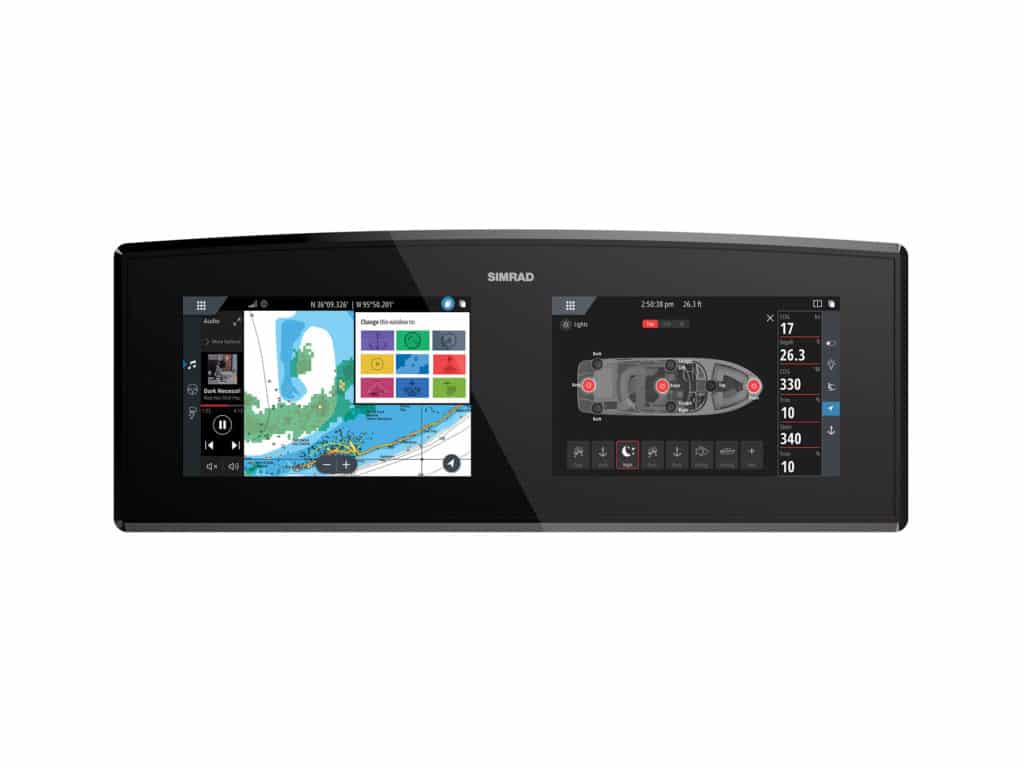
Piloting a new car is easy, so why should stepping behind a new helm feel any different? This was Navico’s thinking when the manufacturer of the B&G, Lowrance and Simrad brands released its Information Display system, which gives boatbuilders a new way of integrating, monitoring and controlling all of a yacht’s instrumentation, switching and onboard systems.
Navico’s ID system includes a bonded, helm-mounted display (or multiple displays) and a centralized, belowdecks Integration Hub that allows the ID to talk to almost any onboard system or compatible onboard instrumentation using Ethernet, Wi-Fi, Bluetooth, sonar, USB, CAN or NMEA 2000 connectivity. Also, while the ID is agnostic in terms of its ability to communicate with different onboard systems, it must be paired with a digital switching system to deliver full, systemwide integration.
The ID was designed for boatbuilders, not aftermarket customers. Because of this, the system’s display is available in a variety of semicustomizable form factors that allow boatbuilders to eliminate cluttered, mixed-brand helms in favor of an automotive-like interface that offers at-a-glance access to navigational and systems information. Each ID ships with the boatbuilder’s choice of B&G, Lowrance or Simrad software, and each ID features predefined operating modes (systems checks, anchoring, cruising and watersports) that offer self-populating contextual information based on a boater’s current activity.
“I don’t like it—I love it,” Augusto Aday says of his Information Display. “I can run three screens at once, and it gives me a touchscreen and control buttons.”
Once installed, users are presented with an intuitive interface and extensive real-time situational and operational information. And, provided that the system has internet connectivity—such as Navico’s new BoatConnect system—IDs can cloud-report instrument and systems data while allowing owners to monitor, track and control onboard systems from afar via an app.




